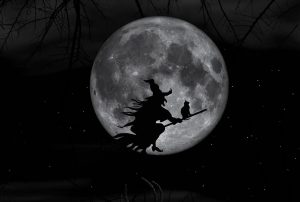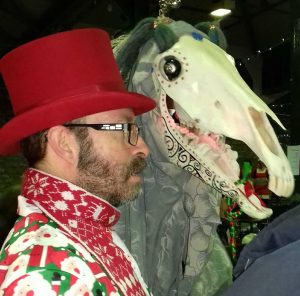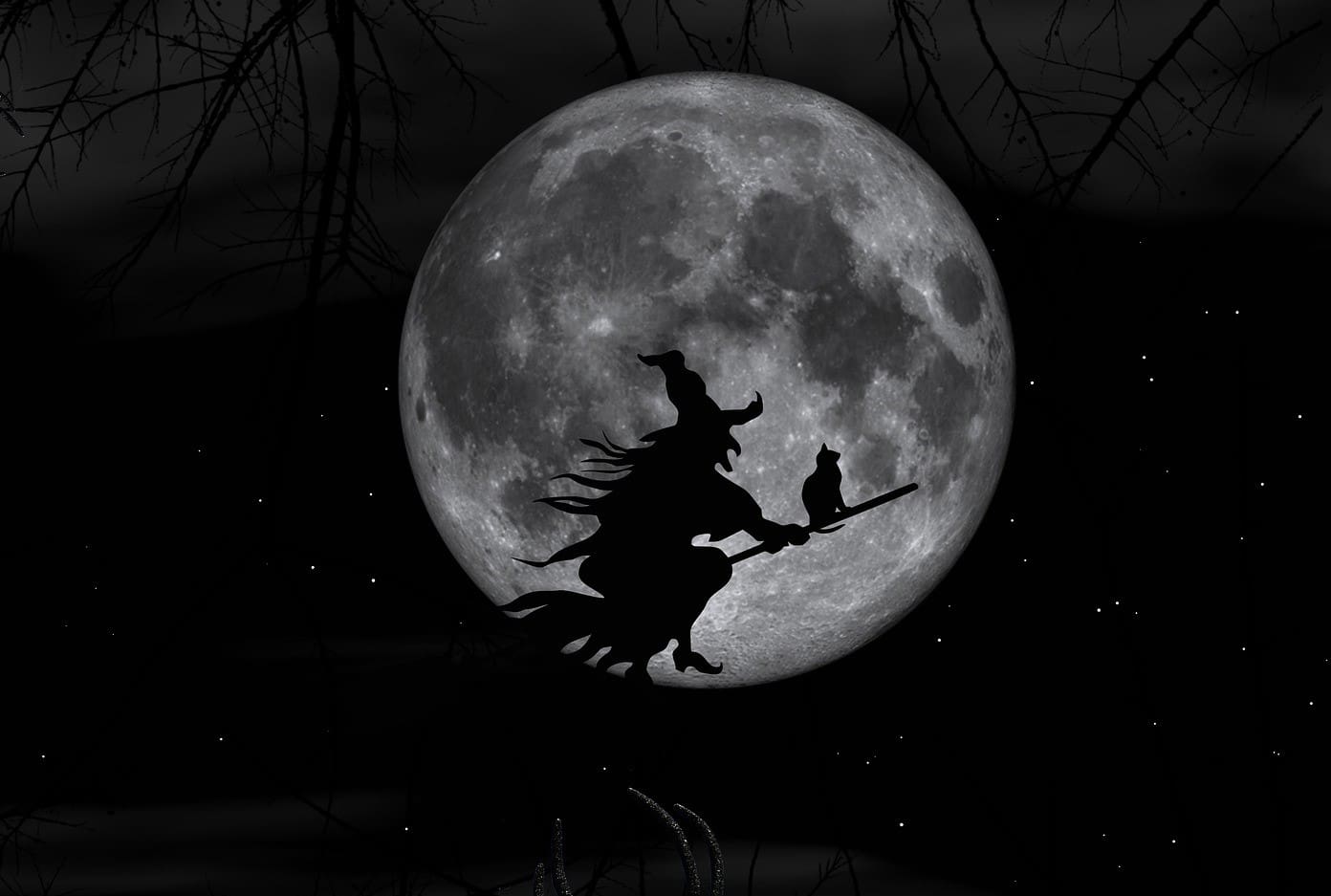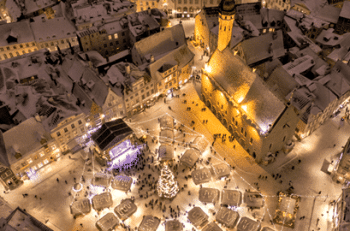Christmas is a time of joy, celebration and tradition for many people around the world. But not all Christmas traditions are the same.
In fact, some of them are quite weird and wonderful.
Here the Christmas.co.uk team highlights how different countries celebrate Christmas in their own unique ways.
Japan
In Japan, Christmas is not a national holiday, but it is still a popular occasion for couples and families to enjoy a special meal together. And what is the most popular dish on the menu? Fried chicken. Yes, you read that right. Fried chicken. According to KFC Japan, more than 3.6 million families order their chicken buckets every year for Christmas Eve, making it the busiest day for the fast-food chain. The tradition started in 1974, when KFC launched a marketing campaign called ‘Kurisumasu ni wa kentakkii’ (Kentucky for Christmas), which appealed to Japanese customers who had no established Christmas customs of their own.
Norway
 We love this one from Norway because Christmas Eve is a time to hide your brooms. Why? Because according to an old superstition, witches and evil spirits come out on this night and look for brooms to ride on. To prevent them from stealing their brooms and causing mischief, Norwegians hide them in the safest places they can find, such as under the bed or in a cupboard. Some people even fire shotguns outside their houses to scare away the unwanted visitors.
We love this one from Norway because Christmas Eve is a time to hide your brooms. Why? Because according to an old superstition, witches and evil spirits come out on this night and look for brooms to ride on. To prevent them from stealing their brooms and causing mischief, Norwegians hide them in the safest places they can find, such as under the bed or in a cupboard. Some people even fire shotguns outside their houses to scare away the unwanted visitors.
Portugal
The Portuguese Christmas feast, known as ‘consoda’, often includes an unusual practice. Families set extra places at their dining table for their departed loved ones. This custom is believed to bring good luck and prosperity to the household. Some families even leave crumbs on the hearth for the spirits.
Guatemala
Guatemala has a unique way of preparing for Christmas. It involves getting rid of all the dirt and clutter in your home, as well as the evil spirits that may lurk there. According to local beliefs, the devil and other wicked beings hide in the dusty and dark places of your house. To cleanse your home and your soul, you need to sweep up, gather all the rubbish and pile it up outside. Then, you place a figure of the devil on top and light it on fire. It’s known as the ‘Burning of the Devil’ or La Quema del Diablo with the aim of burning away all the negativity from the past year so you can start a new year with a clean slate. If you don’t believe us, watch this:
Christmas traditions in Spain
We had to double-check this one but in Catalonia, a region in Spain, there is a curious character that appears in nativity scenes along with Mary, Joseph and baby Jesus. Called ‘caganer’, which means ‘the pooper’ in Catalan. The man is depicted usually as a peasant in red trousers and hat squatting to defecate in a corner of the nativity scene. The origin and meaning of this tradition are unclear, but some say it symbolises fertility, luck or humility. Others say it is just a humorous way of humanising the sacred scene. Another poop-related custom is the pooping log or caga tió. This is a wooden log with a face and a blanket that is ‘fed’ with sweets and nuts every day in December. On Christmas Eve, children hit the log with sticks – piñata style – and sing songs to make it poop out presents. Yes, really.
Germany
In Germany, a tradition known as ‘Fill your boots’ takes place on the evening of December 5th. Children across the country participate by placing a boot or shoe outside their bedroom door. When morning comes, children who have been well-behaved throughout the year will discover their footwear brimming with sweets. Those who haven’t behaved quite as well, however, will find nothing more than a single branch in their shoe.
Venezuela
 In Venezuela, the capital city of Caracas has a very unusual way of getting to church on Christmas morning. Instead of walking or driving, people roller-skate. The tradition is so popular that the streets are closed to traffic in the morning to allow the skaters to glide freely. Children also tie a string to their toes and hang it out of the window before going to bed. The next morning, the skaters tug on the strings as they pass by, waking up the children.
In Venezuela, the capital city of Caracas has a very unusual way of getting to church on Christmas morning. Instead of walking or driving, people roller-skate. The tradition is so popular that the streets are closed to traffic in the morning to allow the skaters to glide freely. Children also tie a string to their toes and hang it out of the window before going to bed. The next morning, the skaters tug on the strings as they pass by, waking up the children.
Ukraine
According to a local legend, a poor widow and her children found a Christmas tree growing in their hut. They couldn’t afford decorations, so spiders spun webs around the tree, which turned into gold and silver overnight, hence the tradition of hanging spider web decorations on their trees. The spider webs are now seen as a sign of good luck and prosperity.
Christmas traditions in Iceland – 13 Santas!
Icelandic children have 13 Santas to look forward to (or fear) in December. These are the Yule Lads who come from a family of trolls and they dress up and come down from the mountains one by one in the 13 days before Christmas. Each Yule Lad has a different name and personality, such as Spoon-Licker, Doorway-Sniffer, Candle-Stealer, Sausage-Swiper and Window-Peeper. They leave gifts or rotten potatoes in the shoes of children who put them in their windows, depending on their behaviour. Learn more:
Sweden
Every year since 1966, a giant straw goat has been erected in the town of Gävle, Sweden, as part of an Advent celebration. And almost every year, someone has tried to burn it down or destroy it in some other way. The goat has become famous for its misfortunes and has even been featured in video games and movies. Despite the security measures taken to protect it, the goat’s fate is always uncertain.
Austria
In Austria, there’s a terrifying horned creature known as Krampus, who is said to punish naughty children during the Christmas season. Krampus, a terrifying half-goat, half-demon creature appears on December 5 and is the dark counterpart of Saint Nicholas, who rewards good children with gifts. On Krampusnacht, men dressed as the beast roam the streets with sticks and chains, scaring and chasing anyone who crosses their path.
Philippines
Here, on the Saturday before Christmas Eve, there is the Giant Lantern Festival in the city of San Fernando. There are 11 barangays or villages that take part in the festival and competition is fierce as everyone pitches in trying to build the most elaborate lantern.
The Netherlands
December 5 is Sinterklaas/St Nicholas’ Eve and the 6th is Sinterklaas/St Nicholas’ Day in the Netherlands. This is when St Nicholas, who is called Sinterklaas in Holland, brings children presents. The main celebrations take place on December 5, rather than on St Nicholas Day. This rather spooky newsreel footage from British Pathe explains more:
Christmas traditions in Wales
 In some parts of Wales, people celebrate Christmas by carrying around a horse skull on a pole covered with a white sheet. This is Mari Lwyd, an ancient folk custom that involves singing and rhyming at people’s doors in exchange for food and drink. The origin and meaning of Mari Lwyd are unclear, but some say it represents a pagan goddess or a symbol of rebirth. This image from Brecon Mari Lwyd illustrates the custom.
In some parts of Wales, people celebrate Christmas by carrying around a horse skull on a pole covered with a white sheet. This is Mari Lwyd, an ancient folk custom that involves singing and rhyming at people’s doors in exchange for food and drink. The origin and meaning of Mari Lwyd are unclear, but some say it represents a pagan goddess or a symbol of rebirth. This image from Brecon Mari Lwyd illustrates the custom.
South Africa
In South Africa, there is a delicacy that is often eaten as a snack or a side dish on Christmas Day: fried caterpillars. These are not just any caterpillars, but the larvae of the emperor moth, which are called ‘mopane worms’ because they feed on the leaves of the mopane tree. They are rich in protein and minerals and have a crunchy texture and a nutty flavour. They are usually boiled in salt water, then dried and fried in oil.
These are just some of the weird Christmas traditions that you can find around the world. They highlight how diverse and fascinating cultural practices can be during the festive season – and here are some traditions from the UK.





